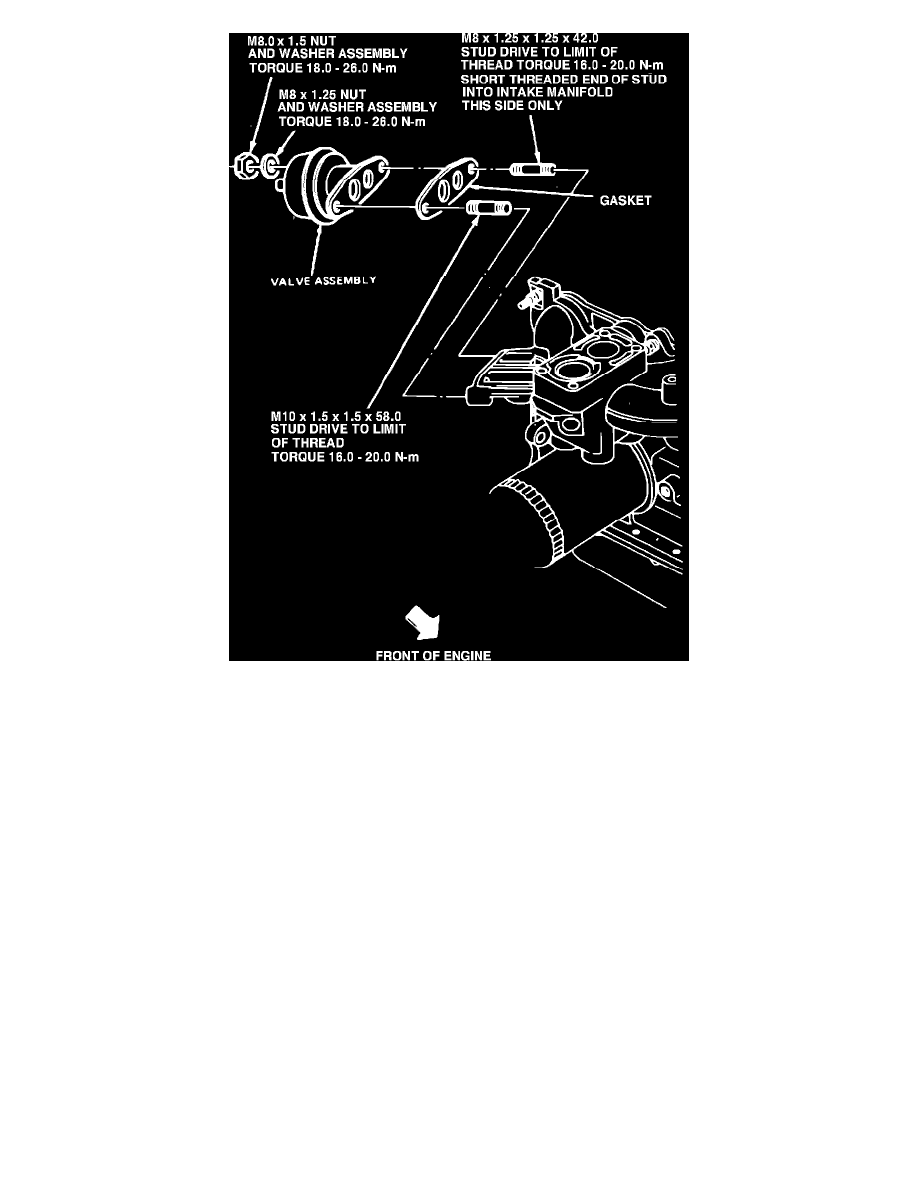Bronco L6-300 4.9L VIN Y 1-bbl (1983)

Fig. 47 Intake manifold mounted EGR connection
On some engines, the EGR system routes exhaust gas directly from the exhaust manifold, Fig. 47.
Two variables control the operation of the EGR system, 1) engine coolant temperature and 2) engine or carburetor vacuum. When engine coolant
temperature is below the specified level, the EGR system is locked out by a temperature controlled vacuum switch. This vacuum switch is installed in
series with the EGR valve. This valve receives vacuum from a port in the carburetor body. When the valve is closed due to lower coolant temperature, no
vacuum is applied to the EGR valve and no exhaust gas is fed to the air-fuel mixture. When the engine coolant temperature reaches the specified level,
the valve opens allowing vacuum to be applied to the EGR valve. Exhaust gas is then fed to the air-fuel mixture. The second factor controlling EGR
operation is carburetor vacuum. The location of the EGR port in the carburetor determines at what point vacuum is sent to the EGR valve. Vacuum
should be fed to the EGR vacuum control valve when the primary throttle plate reaches a position corresponding to a road speed of approximately 20
mph under light acceleration.
